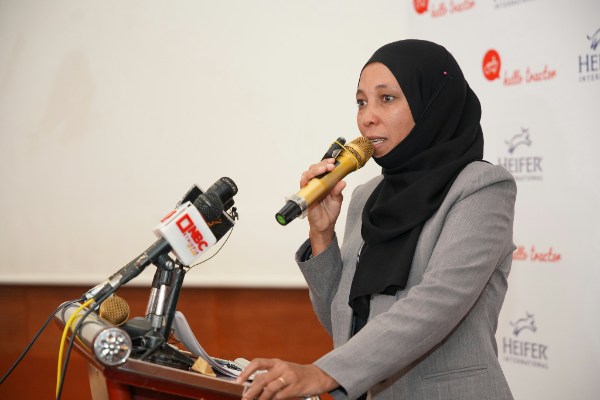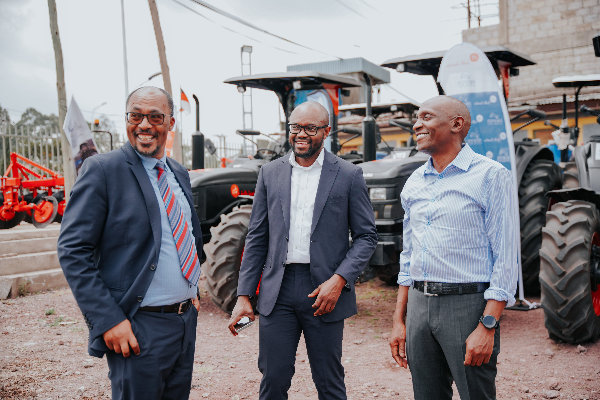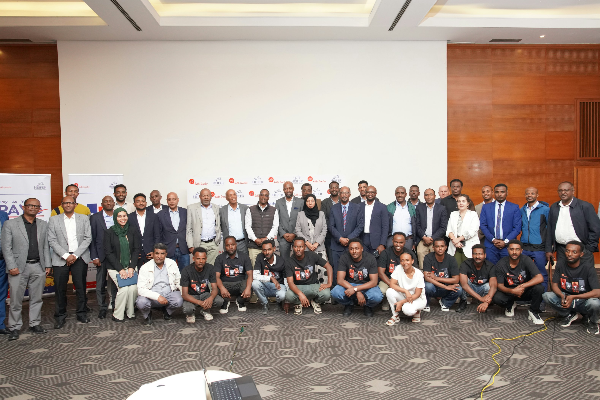In a move to close the mechanization gap in Ethiopia’s agriculture sector, Heifer Ethiopia, in partnership with agritech firm Hello Tractor and the Ministry of Agriculture, has unveiled a new Pay-As-You-Go (PAYG) tractor financing model that allows smallholder farmers to rent—and over time own—tractors without paying the full cost upfront.
The initiative was formally launched on October 8 at the Hilton Addis, under the banner “Innovative Pay-As-You-Go Tractor Financing for Increased Agricultural Productivity and Job Creation in Ethiopia.”
Ethiopia remains heavily dependent on manual labor in its agricultural sector. Nearly 95 percent of agricultural production comes from smallholder farmers, many of whom struggle even to afford essential inputs such as fertilizer.
While the share of farmland plowed by tractors has increased from 5.7 percent in 2020 to 25 percent in 2025, the mechanization deficit remains steep.
Speaking at the launch, Sofiya Kassa (PhD), State Minister of Agriculture, stated, “Farmers of Ethiopia are done plowing with animals.” She described the new partnership as “a glimpse of the future, where Africa’s agriculture is not just mechanized, but smart, connected, and inclusive.”
In her remarks, she acknowledged that agriculture accounts for roughly 32 per cent of Ethiopia’s GDP but noted persistent underperformance in the sector. She warned of increasing frustration among farmers reliant on traditional methods and emphasized that financial institutions often view agriculture as risky.
“Harvesting with technology leads to higher productivity,” she added, arguing that the PAYG model’s transparency and digital monitoring could help reduce perceived risks.

Accessing tractor services
Under the PAYG scheme, farmers can access tractor services through flexible repayment plans, with repayments tied to revenues generated through mechanization services rather than through conventional collateral-based lending. The digital platform offered by Hello Tractor connects farmers with tractor owners, enables service booking, tracks usage, and monitors performance.
Folu Okunade, co-founder and COO of Hello Tractor, described the larger continent-level supply shortfall: “We’ve worked with over 300,000 farmers and served more than 700,000 hectares of land. Seventy percent of that happened just this year.”
He estimated that Ethiopia alone needs about 400,000 tractors to meet demand. Of the 6,000 tractors currently on Hello Tractor’s digital platform across Africa, around 800 are active in Ethiopia.
As part of the launch, Hello Tractor handed over 10 tractors to Ethiopian agripreneurs under our PAYG model, empowering local entrepreneurs to drive access to mechanization. The new owners—young agripreneurs selected through the program—are expected to play a key role in expanding mechanization services across rural communities.
Youth involvement
Hello Tractor’s field agents, many of them youth, act as intermediaries: they promote mechanization services, collect farm-level data, and help manage relationships between farmers and tractor owners. Over 600 youth have already been trained in data and agricultural technology roles.
According to Mao Yohannes, Hello Tractor’s Ethiopia country director, selected agents may have opportunities to own tractors themselves by saving up to 15 per cent of the purchase cost over time.
Timoteos Borsamo, Interim Country Director of Heifer Ethiopia, explained that the financing will revolve: repayments flow back to support new cohorts of youth. “The Pay-As-You-Go model makes tractor services affordable for farmers while creating pathways to ownership for young people,” he said.
He also emphasized that the model fits within Heifer’s broader Transforming Africa’s Agriculture through Mechanization (TRAAM) agenda. “This initiative reflects our commitment to ending hunger and poverty—while caring for the Earth,” Borsamo said.
The scheme will initially roll out in five regional states: Oromia, Amhara, Central Ethiopia, Sidama, and Somali. Organizers say that as the model scales, it could significantly improve productivity, bolster food security, and help transform the rural economy.

Cost of agricultural equipment in Ethiopia
Yet challenges remain. The cost of heavy agricultural equipment is staggering: a single combine harvester can reach 40 million birr, making direct purchase unrealistic for most farmers.
Ethiopia’s 10-year agricultural plan has targeted expansion of the national tractor fleet from 20,000 to 65,000 units, and combine harvesters from 2,700 to 15,000 units.
Eshetu Hunde, executive director of the Agricultural Mechanization Division, warned that the critical task ahead is ensuring “organized youth and smallholders can participate in this transformation.”
As Ethiopia bets on unleashing youth-led mechanization through technology and innovative finance, the PAYG tractor model may well become a test case for how to transform African smallholder agriculture in the 21st century.









